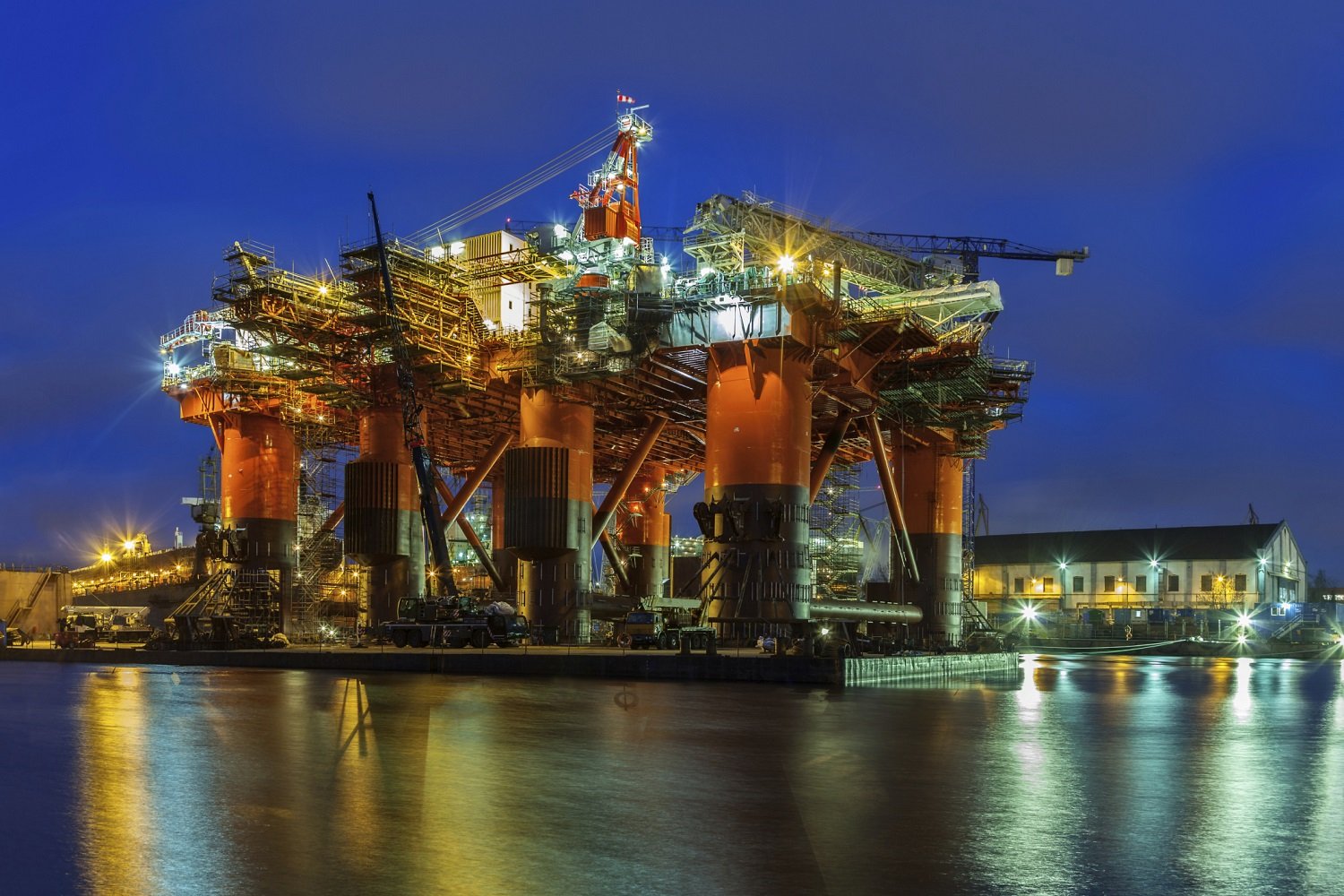Seadrill (SDRL +0.00%) stock has been one of the worst stocks on the market this year, falling 71%, but that doesn't mean Seadrill's business has been weak. In fact, earnings have been fairly strong, reporting its top three EBITDA quarters in history this year.
But the market has thrown out Seadrill because of falling oil prices, giving investors a discount, at least compared to the share price at the beginning of the year. But is this a buying opportunity or a value trap for investors?
Seadrill has a good year ahead
No matter what happens with oil over the next year, Seadrill will have a decent year. Seadrill Group as a whole, which includes a number of subsidiaries, has about $6.5 billion in backlog in 2015 and nearly $6 billion more in 2016. In total, Seadrill Limited, the parent company, has a backlog of $13.1 billion for its floating rigs and $5.2 billion for jack-ups.

Total Seadrill Group backlog. Source: Seadrill.
Put another way, Seadrill has 91% of its available rig days contracted next year and 74% are already contracted for 2016. This contracted backlog is one of the reasons Seadrill's stock has long been attractive to investors. Energy explorers sign up for multiyear drilling programs and will lock up rigs that have the capability to do the work they need done. The result is high revenue visibility and less dependence, from an operating perspective, on the price of oil.

Seadrill's contract coverage over the next three years. Source: Seadrill.
This backlog and contract coverage means next year will be good for Seadrill's operations even if oil continues to fall. Whether or not Seadrill is able to contract any of its rigs that come available next year and continue cash flows into 2017 and beyond is the question.
The cloud hanging over Seadrill stock
Everything I've pointed out so far sounds very bullish for Seadrill stock. But the flip side is that demand for offshore drilling rigs could dry up if oil stays below $70 per barrel or falls even further. Ultradeepwater drilling, in particular, has higher costs than shallower wells and will see much lower demand if oil falls significantly. Since this is where Seadrill has most of its exposure, this is a major risk for the company.
To complicate matters, there are a large number of aging rigs that companies may try to squeeze for every last drop of revenue -- accepting dayrates that are at or below breakeven cash flow. Seadrill says around 200 such rigs are over 30 years old and should likely be scrapped, but no one knows how long it will take for these rigs to cycle out of the market. For Seadrill's sake, this needs to happen quickly because 140 new rigs, including 16 from Seadrill, will be completed by the end of 2017.
The perfect storm for Seadrill would be demand weakening and supply of offshore rigs exploding. Dayrates could fall and much of the global drilling fleet could go unused. It's this worst-case scenario that has the market scared right now.
How you should be looking at Seadrill stock right now
Answering whether or not Seadrill's stock is a buy or not depends largely on your view of oil and your risk tolerance. If you're an oil bull, this stock is a great way to play the commodity's recovery without betting on specific wells around the world.
Of course, Seadrill is also a high-risk company with $13.1 billion in long-term debt and about $4 billion more in new rig expenses over the next two years. If oil recovers, the stock will explode, but if it doesn't, there's a potential Seadrill doesn't survive.
I think Seadrill is a good risk/reward right now given the huge upside if oil recovers, but investors need to know that it's a high risk bet. You're betting that OPEC doesn't decide to keep production high and push prices lower for the next two or three years, which is a distinct possibility. I own shares of Seadrill, but buyer beware.





